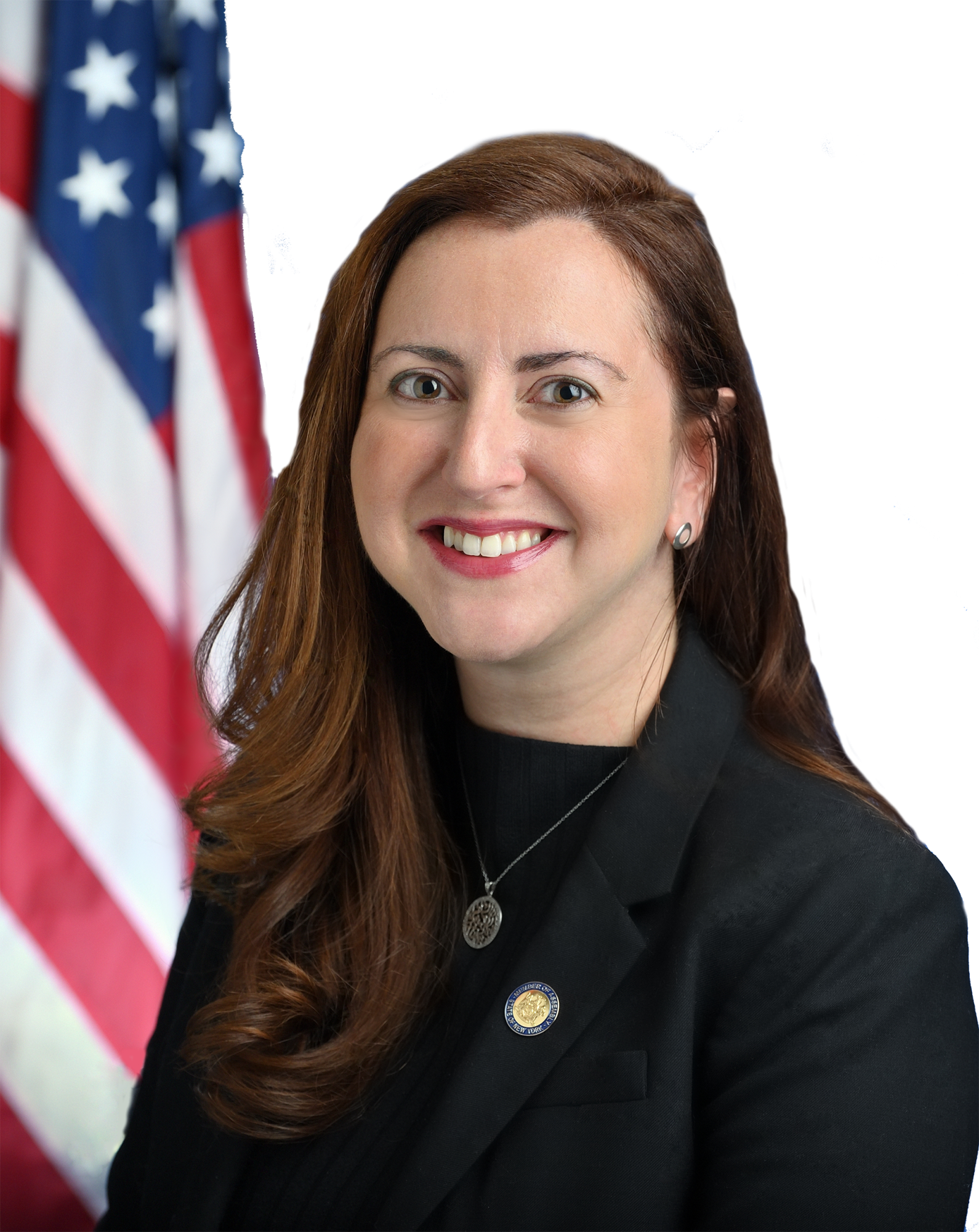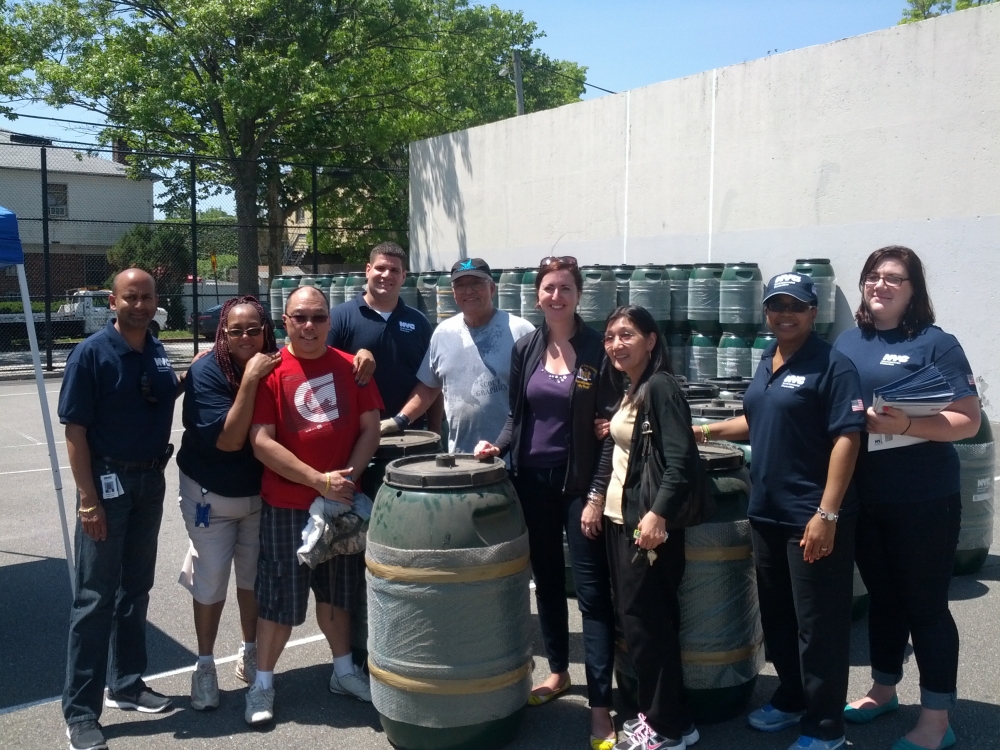Rozic & Department of Environmental Protection Distribute 300 Rain Barrels
Helping local residents to protect local streets and conserve water
Queens, NY – This Sunday, the New York City Department of Environmental Protection (DEP) and Assemblywoman Nily Rozic distributed approximately 300, 60-gallon rain barrels to residents in Queens. Rain barrels can help lower a homeowner’s water bill, while reducing the amount of water that enters the City’s sewer system, and conserving water from the City’s unfiltered drinking water supply. Sunday’s event was held at George Ryan Middle School JHS 216 in Fresh Meadows and the rain barrels were provided free of charge.
“Rain barrels are a simple and effective way for homeowners to conserve water and save money” said DEP Commissioner Emily Lloyd. “By capturing stormwater, rain barrels will also ease pressure on the City’s sewer system and improve the health of local waterways.
“Collecting rain water can help people save on their water bill and is a great way to keep gardens and lawns healthy during hot summer months,” said Assemblywoman Rozic. “I want to thank Mayor de Blasio and DEP Commissioner Lloyd for bringing relief to local homeowners and for continuing our vision of a greener, more livable neighborhood.”
Since the beginning of the year, Rozic has been working with DEP to mitigate flooding in the community. Rain barrels are easy to install and connect directly to a property owner’s downspout to capture and store storm water, reducing the burden on the city’s waterways. Storm water collected in rain barrels can be used to water lawns and gardens, or for other outdoor chores.
DEP’s Rain Barrel Giveaway Program is part of New York City’s Green Infrastructure Plan that aims to capture stormwater before it ever enters the sewer system and thereby reduce combined sewer overflows into local waterways. DEP has committed to invest $2.4 billion in green infrastructure projects as well as other source controls, such as rain barrels, to significantly reduce combined sewer overflows by 2030.
The rain barrel program also builds upon DEP’s efforts to conserve water as part of a $1.5 billion initiative to ensure clean, reliable, and safe drinking water for more than nine million New Yorkers for decades to come. As part of this initiative, DEP will repair leaks in the Delaware Aqueduct that supplies roughly half of the city’s daily drinking water. In order to make repairs to the Aqueduct, the tunnel must be temporarily shut down between 2020 and 2021. Ahead of the planned shutdown, DEP aims to reduce citywide water consumption by five percent.
In addition to encouraging homeowners to conserve water, DEP has initiated a partnership with the New York City Department of Parks and Recreation to install activation buttons on spray showers in 400 playgrounds around the city that will save 1.5 million gallons of water a day during the summer months. DEP is also installing new, high efficiency fixtures in the bathrooms of 500 City schools to reduce water consumption by nearly 4 million gallons each school day. In the first public/private partnership, the Hotel Association of New York City has also partnered with DEP to reduce water use at some of its premier hotels by five percent annually. And, recently, the department announced a $23 Million High Efficiency Toilet Replacement Program designed to replace inefficient toilets in select residential properties across the five boroughs, which will save another 10 million gallons of water each day.
At the event, each homeowner received a rain barrel along with an installation kit, instructions, and the DEP Homeowner’s Guide to Flood Preparedness. Rain barrels should only be used for non-potable purposes such as gardening and must be disconnected from the downspout during the winter months to avoid freezing. Rozic’s office provided information and translation in Chinese, Korean, and Spanish.
DEP manages New York City’s water supply, providing more than one billion gallons of water each day to more than nine million residents, including eight million in New York City. The water is delivered from a watershed that extends more than 125 miles from the city, comprising 19 reservoirs and three controlled lakes. Approximately 7,000 miles of water mains, tunnels and aqueducts bring water to homes and businesses throughout the five boroughs, and 7,500 miles of sewer lines and 96 pump stations take wastewater to 14 in-city treatment plants. For more information, visit nyc.gov/dep, like us on Facebook at facebook.com/nycwater, or follow us on Twitter at twitter.com/nycwater.

